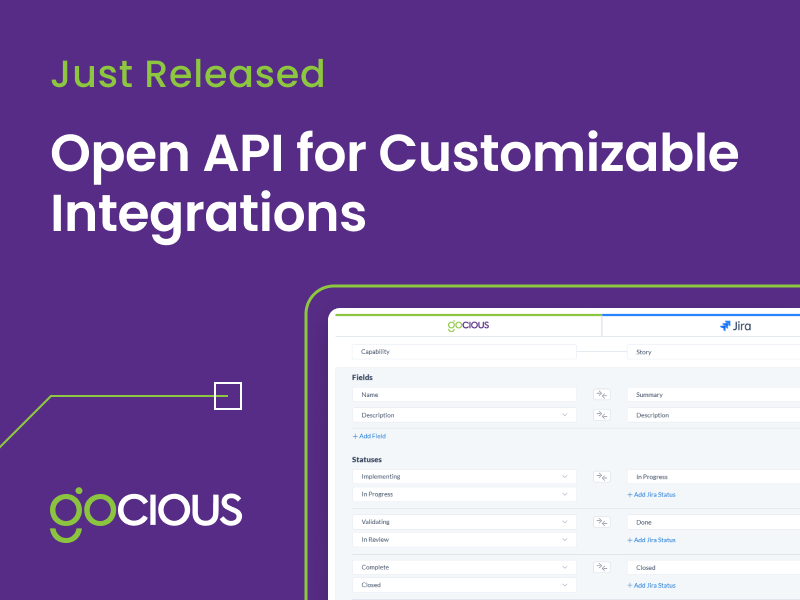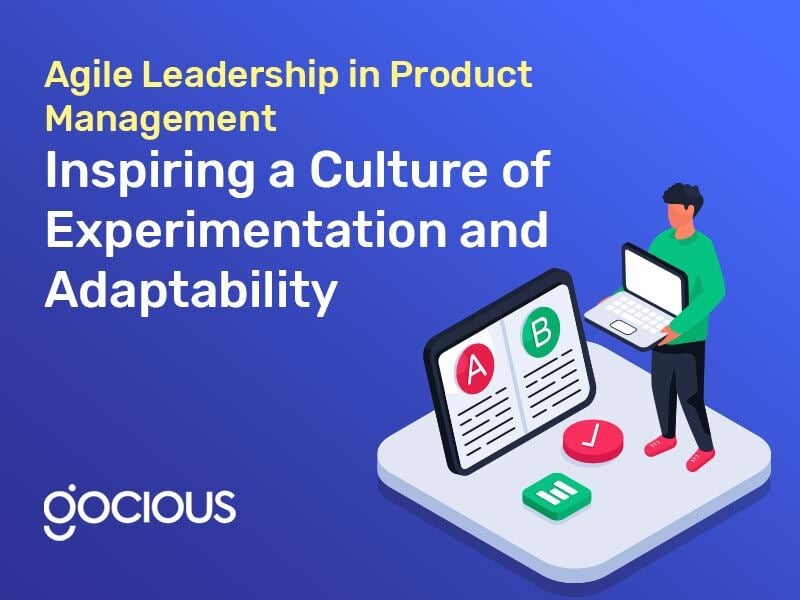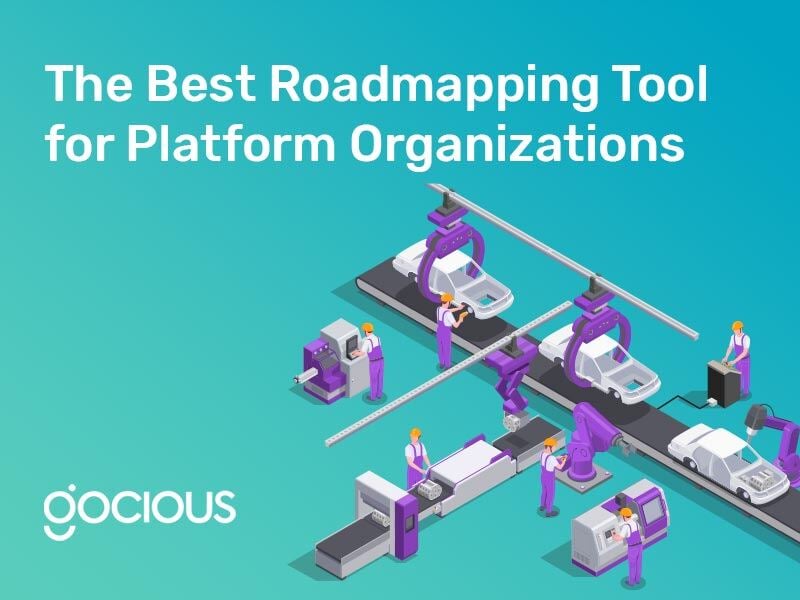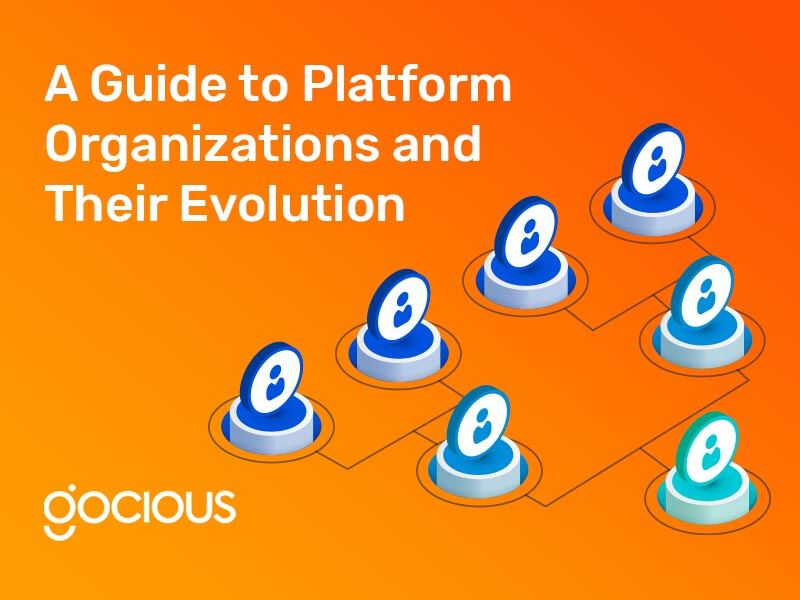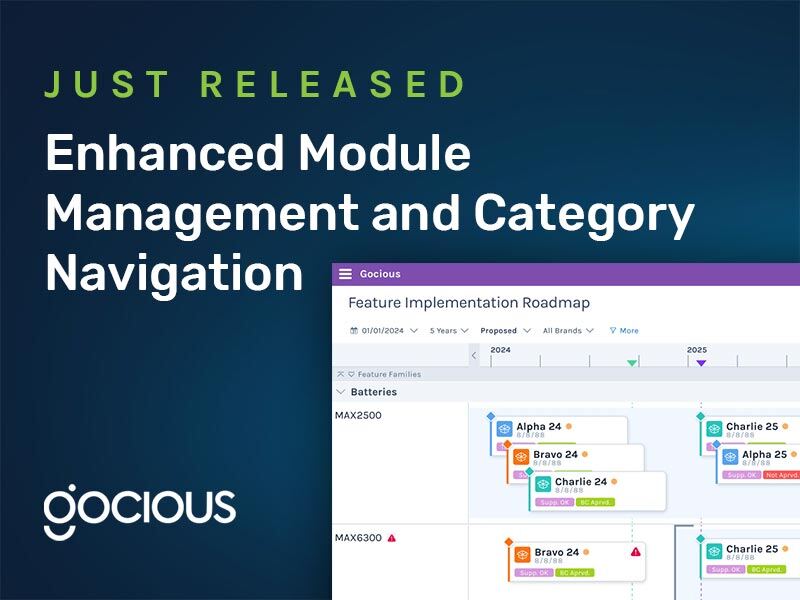
Subscribe to our blog
Ready to improve your roadmapping process?
Curious about how Gocious can help your manufacturing team transform its Product Lifecycle Management strategy? Let’s schedule a call to explore!
Product Management Articles
Agile Leadership in Product Management: Inspiring a Culture of Experimentation and Adaptability
The world of product development is competitive. Because of this, many companies have aligned their operations with Agile principles or a hybrid version. Agile leadership isn't just a nice-to-have for companies seeking to lead their industries—it's a must. While Agile leaders thrive on experimentation and adaptability, which are crucial for success, they must also inspire their teams to keep the organization aligned.
Introducing Interval Roadmaps: Product Roadmap Innovation at Your Fingertips
Our new Interval Roadmap converts our dashboards into a streamlined vertical roll-up, clearly displaying product plans by time intervals.
Now, your product management teams can easily understand and monitor their development plans by month, quarter or year, over a 1-, 3-, or 5-year timeframe.
The Best Roadmapping Tool for Platform Organizations
With platform organizations, having a clear and cohesive strategy is paramount for success. Navigating complex product configurations, aligning cross-functional teams, and maintaining transparency across diverse stakeholders can be challenging. This is where roadmapping software for complex products come into play.
A Guide to Platform Organizations and Their Evolution
The structure of an organization defines its hierarchy, communication flow, and allocation of responsibilities, fundamentally shaping its efficiency and effectiveness. A well-designed organizational structure is crucial as it directly influences decision-making processes, operational efficiency, and employee morale.
An optimal structure not only supports the organization's strategic goals but also enhances its ability to adapt to changing market dynamics and external pressures.
The Best Product Roadmap Software by Industry
Clear and effective product roadmaps are crucial for success across all industries, especially in highly competitive markets. Whether you are developing software, manufacturing physical goods, or creating cyber-physical products, choosing the right roadmap software can streamline your processes, enhance collaboration, and ensure that your strategic vision is effectively communicated and executed.
Integrating Design Thinking into Agile Product Roadmapping for Better Products
Staying competitive in product development requires out-of-the-box thinking. Having creative leaders in the company can lead to innovative thinking, while the methodologies and frameworks also help facilitate the other side of creativity. Combining methods from different disciplines can yield powerful results and spark new results from your teams.
From Ideation to Execution: Five Agile Practices for Rapid Development in Manufacturing
It doesn’t matter what industry you look at; manufacturing companies face constant pressure to innovate, improve efficiency, and deliver high-quality products quickly. Adopting agile practices can significantly enhance a company’s ability to respond to these demands and make the process from idea to product launch more efficient. However, it’s not as simple as following a playbook for product development.
The Role of DevOps in Accelerating Product Roadmap Delivery
Streamlining Development to Deployment in Manufacturing
In the competitive landscape of cyber physical product development (physical products with a software component), the ability to rapidly deliver new features and updates is crucial for winning over and retaining customers. These results are easier said than done, as cyber-physical product manufacturers must navigate the challenges of integrating hardware and software development at scale across diverse portfolios. Development frameworks, collaborative software, and cross-functional teams are all key solutions that make product delivery easier.
Managing Scope Creep and Change Requests in Agile Product Roadmaps
Even the best-defined product plans are at risk of a landslide of suggested additions or changes to the scope. When you have a group of talented, innovative designers, engineers, and customer-focused teams involved, brilliant ideas happen at all times. In some cases, a requested change to the product due to a new idea can be the key to that product’s success, while at other times, these suggestions creep in to alter the scope and distract from the true goal.
The Challenges of Designing for Diverse Markets: How Dynamic Roadmaps Provide Solutions
Developing products for global markets can be challenging and requires companies to navigate various demands, regulations, and market dynamics. Companies that want to maintain a cohesive brand while finding success in different regions must conduct extensive research to understand diverse consumer behaviors, preferences, and cultural nuances. Companies focused on success will research and test with new demographics before launching a new product model. Those same companies will thoroughly study and test their products in a new region to ensure there is a customer base with a demand for their products before launching.
Just Released: Enhanced Module Management and Category Navigation
At Gocious, we're dedicated to supporting our customers' needs. When they tell us how a certain feature or capability would make their team's work easier, we listen and take the feedback seriously. Every quarter, we release updates that make dynamic roadmapping more effective and efficient for all levels of an organization, from lead engineers to product management teams to executive-level positions.
Agile at Scale: The Challenges of Navigating Complex Product Roadmaps in Manufacturing
In modern manufacturing, swiftly adapting to market demands, technological advancements, and regulatory changes is vital to success. Creating and following Agile methodologies and strategies helps manufacturers enhance flexibility and responsiveness in their products. However, implementing Agile at scale often presents unique challenges, particularly when navigating complex product roadmaps. In this article, we explore these challenges and offer insights on how to overcome them.

